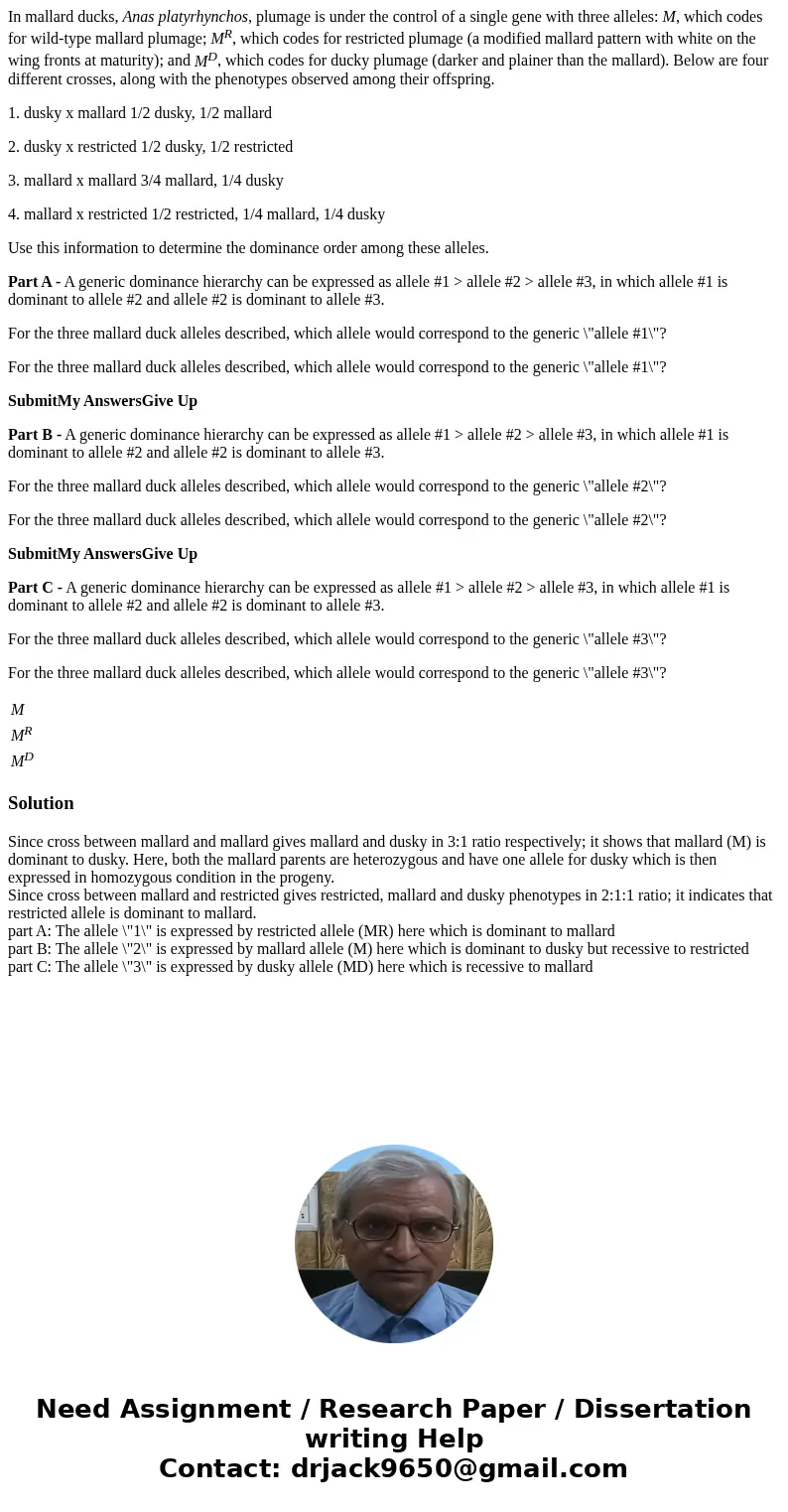In mallard ducks Anas platyrhynchos plumage is under the con
In mallard ducks, Anas platyrhynchos, plumage is under the control of a single gene with three alleles: M, which codes for wild-type mallard plumage; MR, which codes for restricted plumage (a modified mallard pattern with white on the wing fronts at maturity); and MD, which codes for ducky plumage (darker and plainer than the mallard). Below are four different crosses, along with the phenotypes observed among their offspring.
1. dusky x mallard 1/2 dusky, 1/2 mallard
2. dusky x restricted 1/2 dusky, 1/2 restricted
3. mallard x mallard 3/4 mallard, 1/4 dusky
4. mallard x restricted 1/2 restricted, 1/4 mallard, 1/4 dusky
Use this information to determine the dominance order among these alleles.
Part A - A generic dominance hierarchy can be expressed as allele #1 > allele #2 > allele #3, in which allele #1 is dominant to allele #2 and allele #2 is dominant to allele #3.
For the three mallard duck alleles described, which allele would correspond to the generic \"allele #1\"?
For the three mallard duck alleles described, which allele would correspond to the generic \"allele #1\"?
SubmitMy AnswersGive Up
Part B - A generic dominance hierarchy can be expressed as allele #1 > allele #2 > allele #3, in which allele #1 is dominant to allele #2 and allele #2 is dominant to allele #3.
For the three mallard duck alleles described, which allele would correspond to the generic \"allele #2\"?
For the three mallard duck alleles described, which allele would correspond to the generic \"allele #2\"?
SubmitMy AnswersGive Up
Part C - A generic dominance hierarchy can be expressed as allele #1 > allele #2 > allele #3, in which allele #1 is dominant to allele #2 and allele #2 is dominant to allele #3.
For the three mallard duck alleles described, which allele would correspond to the generic \"allele #3\"?
For the three mallard duck alleles described, which allele would correspond to the generic \"allele #3\"?
| M |
| MR |
| MD |
Solution
Since cross between mallard and mallard gives mallard and dusky in 3:1 ratio respectively; it shows that mallard (M) is dominant to dusky. Here, both the mallard parents are heterozygous and have one allele for dusky which is then expressed in homozygous condition in the progeny.
Since cross between mallard and restricted gives restricted, mallard and dusky phenotypes in 2:1:1 ratio; it indicates that restricted allele is dominant to mallard.
part A: The allele \"1\" is expressed by restricted allele (MR) here which is dominant to mallard
part B: The allele \"2\" is expressed by mallard allele (M) here which is dominant to dusky but recessive to restricted
part C: The allele \"3\" is expressed by dusky allele (MD) here which is recessive to mallard

 Homework Sourse
Homework Sourse